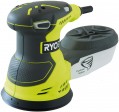Rotation speed
The speed of rotation of the working attachment, which is capable of providing a grinder of the appropriate design (for example, angle — see "Type"). If the device has speed control, this paragraph shows the range of such adjustment, from minimum to maximum.
It makes sense to compare by this parameter units belonging to the same type and having the same maximum diameter of the disk (or other working nozzle). The latter is due to the fact that the larger the disk, the faster its edge moves (at the same speed); i.e. a larger diameter requires less RPM for the same performance/efficiency. In general, when comparing different models, the following should be taken into account. The higher rotation speed is well suited for large volumes of work (because it improves productivity) as well as for fine polishing with “delicate” nozzles. A lower setting, in turn, improves accuracy (reduces the chance of removing excess material), as well as provides more torque and allows you to more effectively deal with hard, stubborn materials. More detailed recommendations for different types of work and different nozzle diameters can be found in special sources; here we note that an increase in the rotation speed, usually, affects the cost of the machine compared to analogues (since this requires a more powerful engine). In addition, discs and other attachments may have maximum RPM limits.
Oscillation speed
The frequency of vibration of the working attachment, which is capable of providing a grinder of the appropriate design (a classic example is vibration, see "Type"). If the device has an oscillation frequency adjustment, this paragraph gives the range of such adjustment, from minimum to maximum.
A higher frequency (with the same amplitude — see below) improves overall performance, especially when working with hard, stubborn materials, and also contributes to efficiency in delicate finishing (such as polishing). In turn, a lower frequency reduces the likelihood of making a mistake by removing an excessive amount of material. There are also more specific points related to this parameter; them, as well as recommendations for choosing the frequency for different jobs, materials and types of sanding sheets, can be found in special sources. Here, we note that individual sanding sheets may have their own limitations or recommendations regarding the operating frequency.
Oscillation amplitude
The amplitude of oscillations made during the operation of the nozzle of an eccentric,
vibration or delta grinding type machine (see above). Along with the frequency (see above), it is one of the most important indicators of such machines. Higher
amplitude provides more intensive processing, which has a positive effect on performance; on the other hand, for delicate work, it is desirable to have
a small oscillation amplitude(less than
2 mm).
Noise level
Approximate noise level generated by the grinder during operation. Note that this indicator is quite approximate, because. actual "loudness" can vary markedly depending on the type and shape of the material being processed, the surface it is placed on, and other circumstances. In addition, different manufacturers may use different measurement methods. Nevertheless, this indicator makes it possible to assess how comfortable this or that model is in operation and whether special hearing protection is required.
The most “quiet” modern grinders give out about 65 dB — this is comparable to loud speech at a distance of 1 m; in the loudest, the noise level reaches 107 dB — this is the volume of an industrial workshop.
Weight
The total weight of the grinder; for battery models (see "Power Source"), usually, it is indicated without taking into account the battery.
This indicator has two meanings. On the one hand,
light weight has a positive effect on manoeuvrability and reduces fatigue during work — especially when processing vertical surfaces and ceilings, as well as in other situations where the tool has to be held on weight. On the other hand, for grinders with a vibrational principle of operation (see "Type"), used for processing horizontal surfaces, a significant weight is considered optimal: it allows the tool to fit closer to the material being processed, and also contributes to stability and retention. So when choosing such a model by weight, it is worth considering the features of its intended application.

